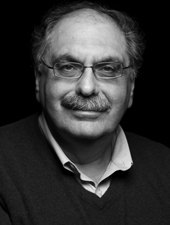Birbrair, A., Zhang, T., Wang, Z. M., Messi, M. L., Enikolopov, G. N., Mintz, A., Delbono, O. (August 2013) Role of pericytes in skeletal muscle regeneration and fat accumulation. Stem Cells and Development, 22 (16). pp. 2298-2314. ISSN 15473287
Abstract
Stem cells ensure tissue regeneration, while overgrowth of adipogenic cells may compromise organ recovery and impair function. In myopathies and muscle atrophy associated with aging, fat accumulation increases dysfunction, and after chronic injury, the process of fatty degeneration, in which muscle is replaced by white adipocytes, further compromises tissue function and environment. Some studies suggest that pericytes may contribute to muscle regeneration as well as fat formation. This work reports the presence of two pericyte subpopulations in the skeletal muscle and characterizes their specific roles. Skeletal muscle from Nestin-GFP/NG2-DsRed mice show two types of pericytes, Nestin-GFP-/NG2-DsRed+ (type-1) and Nestin-GFP+/NG2-DsRed+ (type-2), in close proximity to endothelial cells. We also found that both Nestin-GFP-/NG2-DsRed+ and Nestin-GFP+/NG2-DsRed+ cells colocalize with staining of two pericyte markers, PDGFRβ and CD146, but only type-1 pericyte express the adipogenic progenitor marker PDGFRα. Type-2 pericytes participate in muscle regeneration, while type-1 contribute to fat accumulation. Transplantation studies indicate that type-1 pericytes do not form muscle in vivo, but contribute to fat deposition in the skeletal muscle, while type-2 pericytes contribute only to the new muscle formation after injury, but not to the fat accumulation. Our results suggest that type-1 and type-2 pericytes contribute to successful muscle regeneration which results from a balance of myogenic and nonmyogenic cells activation.
Actions (login required)
 |
Administrator's edit/view item |
